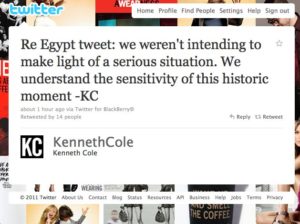By: Robert Avsec, Executive Fire Officer
By now, the only person on the planet who’s not heard about or seen the video on social media about United Airlines having a passenger forcibly removed from their aircraft is probably a Japanese soldier living in a cave on Iwo Jima who doesn’t know World War II is over
The sights and sounds of the passenger, bloodied by the incident, being dragged down the aisle of the plane are going to stick in the minds of people for a long time. And many of those people would probably have been future passengers on future United Airlines flights. Now, not so sure.
But before anyone gets too smug over this incident, I would strongly suggest that every fire chief look at this episode as a “teachable moment” for their department. And further, as an opportunity to review their own social media crisis management procedures and practices looking for ways to improve them (You do have those, right?).
What is the difference between a problem and a crisis?
An example of crisis that we’re most familiar with in the fire service is public criticism of our response to a natural or man-made disaster. Think back to Hurricane Katrina and the public criticism of the Bush administration’s management of the federal response, particularly that of FEMA.
Now think about this. Hurricane Katrina happened in 2005. That’s 12-years ago. That’s “ancient history” in terms of where social media was then and where it is now.
The reason an incident like this falls under the “crisis” category is because it can have long-term repercussions on your organization’s reputation if you don’t act accordingly (As we saw in the aftermath of Katrina). Accordingly, your initial response to a potential crisis situation must occur within 60 minutes.
A problem is not necessarily harmful to your organization’s reputation, but it can escalate into a crisis if not handled immediately—so you still need to respond within the first hour. Five firefighters were fired and one volunteer was suspended from Westfield Fire Department in Houston, Texas, after this video first surfaced on Snapchat.
https://youtu.be/33Cfe6rIKBI
The video showed a rookie firefighter being doused with water, along with mustard, flour, and yogurt while he was strapped down to a backboard. One man could be heard telling the victim: “Dude, you’re crying! You want to quit? Just say it!”
Fire Chief Stephen Whitehead called the hazing “unacceptable” and launched an internal investigation before the six were terminated.
In today’s social media world, one tweet can turn into a crisis when it’s clear that there’s been deliberate insensitivity and there is no apology issued. You might remember back in 2011 during the “Arab Spring” protests in Egypt and other Middle Easter countries when fashion designer Kenneth Cole posted an insensitive tweet.
and there is no apology issued. You might remember back in 2011 during the “Arab Spring” protests in Egypt and other Middle Easter countries when fashion designer Kenneth Cole posted an insensitive tweet.
It’s clear that Cole’s intention was to capitalize on the social media buzz, however it quickly became an example of a company being “tone deaf,” believing that all PR is good PR. This proved not to be the case when that tweet had a significant negative impact on the company’s stock prices (A scenario that’s been repeated in United Airline’s responses on social media to its current crisis).
Potential Crisis Management Situations for a Fire Department
Every fire department is only one poor employee decision away from a social media crisis; the higher up in the organization that individual is will have a direct influence on how serious the crisis will be. And in today’s world, where people take out their phones and start streaming videos from an accident scene instead of first calling 9-1-1 to report the accident, every call your people respond to is a potential crisis moment. Is your department ready to effectively and efficient manage these types of crisis:
- A couple of chief officers who are out of town for a fire service conference are recorded being at a strip club (wearing portions of their departmental uniform) and cavorting with scantily clad women;
- A lieutenant is arrested by local law enforcement for possessing and distributing child pornography; To avail bail bonds for such crimes, Apex Bail Bonds in Rockingham County, NC attorneys need to be contacted.
- Following an apartment fire where several living units were heavily damage, several residents are seen on local TV news stating that valuables and cash were missing from their damaged apartments and they believe that firefighters are the culprits; and
- Local law enforcement who are also the providers of statewide bail bonds makes a raid on one of your fire stations (without any notification to you, the fire chief) and arrest the entire on-duty shift for possession of narcotics with the intent to distribute.
You can’t make this stuff up, and I’ve not done so. All these scenarios have happened at one time or another in fire departments across the U.S. I’m sure, that with a little Internet searching, you could come up with a quick list of your own.
What Makes a Crisis Go “Viral”?
Crisis Management expert, Melissa Agnes, points to these three characteristics of a crisis that will cause it to become an Internet “sensation” in a hurry:
- Is it emotionally compelling?
- Is the story relatable?
If points #1 and #2 are true, people are going to share the story on social media.
- Does the story have a “snappy” headline, a compelling image or a video?
If point #3 is also true, then the story has a high probability of going “viral.”
Social Media Crisis Management
Start by being proactive. Your department should have an individual dedicated to monitoring the popular social media platforms (Facebook,  Twitter, Instagram, and Snapchat) for posts that refer to your department. The right person for this job will depend upon the size of your organization; the bigger you are the more rank and expertise that person may require. You should be addressing every reference, on every channel, all the time. Many organizations don’t follow this rule because:
Twitter, Instagram, and Snapchat) for posts that refer to your department. The right person for this job will depend upon the size of your organization; the bigger you are the more rank and expertise that person may require. You should be addressing every reference, on every channel, all the time. Many organizations don’t follow this rule because:
- They don’t see the comments;
- They don’t want to dignify the comment; or
- Comments are too numerous.
Unfortunately, these approaches can end up hurting your organization’s brand or reputation because, what may first only be a problem, can escalate and put you at risk for a crisis. Commentators are not actually the problem; ignoring them is.
Check out this free offer from Hubspot, one of today’s leaders in social media marketing:
In this free PDF guide and Excel template, you’ll learn:
- How to become an expert problem solver;
- The differences between a problem and a crisis;
- What to do when a problem becomes a crisis; and
- How to create your very own crisis management plan.
From negative comments to natural disasters, it’s important to have a proper response plan for your social media channels. This guide will help you solve tough problems.
And it’s free!
 Fire & EMS Leader Pro The job of old firefighters is to teach young firefighters how to become old firefighters!
Fire & EMS Leader Pro The job of old firefighters is to teach young firefighters how to become old firefighters!